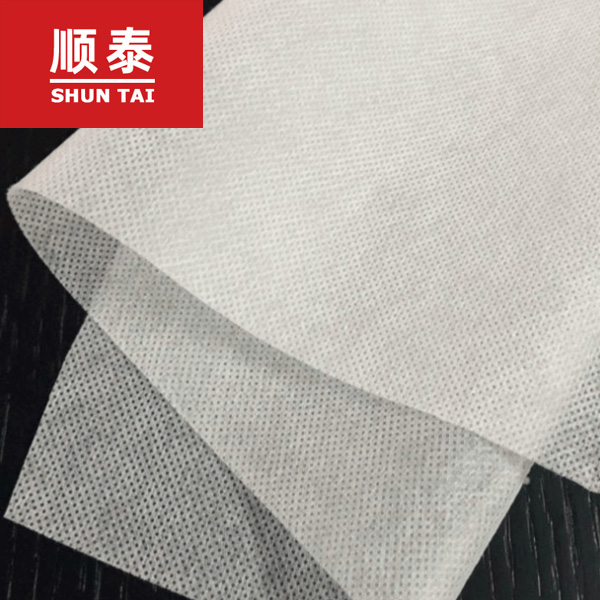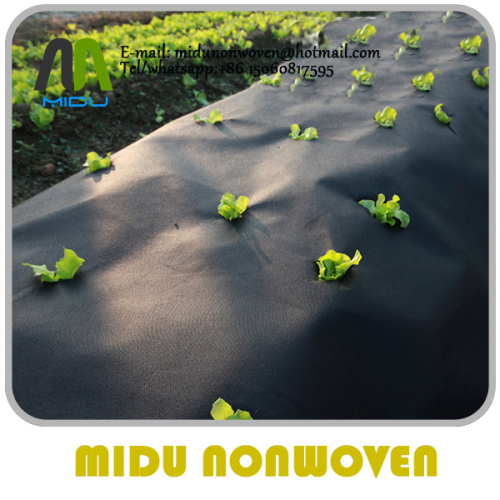
Non-Woven Industries Growth. Nonwoven fabrics are a product of the petrochemical industry following the development of plastic fabric (film). In comparison to plastic cloth, it is less heavy and has good ventilation. It is commonly used in medical and hygiene products such as sanitary napkins and facial towels. Later it was incorporated into engineering to it. Non-woven fabric can be utilized in the production of vegetable products to protect against the effects of cold. Although the process of making non-woven fabric differs from that of plastic film the basic raw materials are nearly identical. This is the case with polyvinyl chloride (PVC) (polyethylene), PE (polyethylene), EVA copolymer (Ethylene Vinyl Acetate), PVA/polyvinyl Alcohol, and more. The typical plastic film is formed into a thin layer by melting the plastic and inflating it. It is a continuous film. It is able to stretch for a long time. The film does not have pores. It is inert and completely blocks any movements and exchanges of molecules. Artificial chemical fibers, fabricated using the above listed raw materials became the most sought-after item in the world of textiles. Chemical fibers can still be made into cloth through traditional weft and warp weaving. Non-woven materials are created by interspersing fibers on the same plane at various angles across all directions, rather than using traditional warp and weft techniques. Compared with traditional woven fabrics they have superior material characteristics, and the production process is able to go from raw materials to finished products in one go. The traditional process of drawing and weaving fibers is completely eliminated. Production costs are also lower. In the last few years, nonwoven materials are being used extensively in the clothing industry. Because of advances in the field of material research and the advancement of production technology Non-woven fabric is becoming more varied and is utilized more extensively. You will find a variety of different materials and products everywhere you go in your day-to-day life. Due to their lightweight and easy production, non-woven textiles have gained the popularity of farming. Follow this non woven weed control fabric for tips.

Non-woven fabrics for the Agricultural Industries. Non-woven textiles first became popular in Europe in 1978. They were used to keep carrots warm in early harvesting and prevent whiteflies and tomato leaf virus. Non-woven fabric can be used for mulching tomatoes, sweet peppers and sweet potatoes and also root vegetables, carrots, the carrots. They also help with the development of other vegetables, like cabbage, lettuce and radishes. It is used primarily for heat preservation, early harvesting, as well as insect control. Non-woven materials have the ability to increase soil temperatures and also retain water which is why they are utilized for grass-proof mats. Short fibers are also utilized in the production of water-absorbing blankets. These are sprayed on nursery beds in order that the roots can completely absorb water. They can also be used as the basis to produce turf or garden grassland to moisturize drain, divide, and spruce up the garden. They are used to plant large woody trees such as fruit trees and garden trees. Non-woven fabrics are also utilized in Taiwan for crop covering. Non-woven fabrics are used extensively in large greenhouses to aid in energy conservation and environmental protection. Double-layered cover and canopy curtains minimize heat radiation and solar radiation at nights. In the beginning, TAVIK non-woven spun-bonded TAVIK fabrics of high density were utilized to shade and shield cauliflower bulbs. Its low thermal conductivityas well as great shading capability and ease of recycling made it a popular choice for farmers. It eventually was employed to protect leaf vegetables from insects as well as shade the trees and fruit trees. The development of non-woven industries is slow because of Taiwan's unique climate and ecology. Taiwan's non-woven fabric producers continue to invent non-woven technology. Their main focus is water absorption and air permeability and water repellency. It is utilized in the storage and preservation of agricultural products. Follow this agriculture non woven fabric manufacturer for more information.
